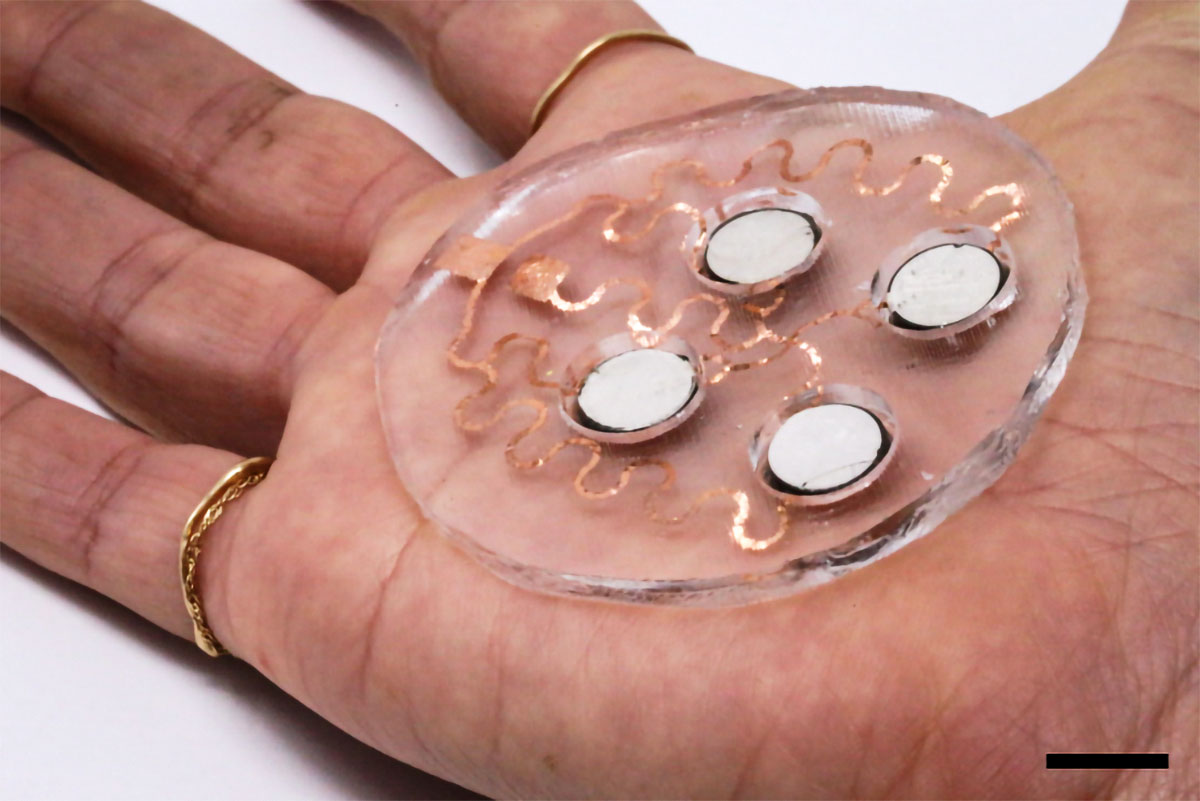Patches to the rescue
New techniques for delivering drugs and vaccines through the skin.

Patches stuck to the skin can be an appealing alternative to injections, pills, and other ways of getting medicines into the body. Two MIT groups have found ways to advance this technology.
Canan Dagdeviren, an associate professor in the Media Lab, and colleagues developed a patch that applies painless ultrasonic waves, creating tiny channels that help drugs pass through. This approach could deliver treatments for skin conditions and could also be adapted for hormones, muscle relaxants, and other drugs, the researchers say.
In tests, 26 times more of a drug passed through pig skin than was possible without ultrasonic assistance.
Meanwhile, researchers led by Ana Jaklenec and Institute Professor Robert Langer, ScD ’74, of the Koch Institute for Integrative Cancer Research have developed a small mobile printer that produces patches with hundreds of nearly painless microneedles, whose tips dissolve under the skin to release a vaccine; a study shows they can effectively vaccinate mice against covid-19.
Once printed, the vaccine patches can be stored for months at room temperature. A prototype can produce 100 in 48 hours, but the researchers expect that could be improved.
“We could someday have on-demand vaccine production,” says Jaklenec. “If, for example, there was an Ebola outbreak in a particular region, one could ship a few of these printers there.”
Keep Reading
Most Popular
Large language models can do jaw-dropping things. But nobody knows exactly why.
And that's a problem. Figuring it out is one of the biggest scientific puzzles of our time and a crucial step towards controlling more powerful future models.
How scientists traced a mysterious covid case back to six toilets
When wastewater surveillance turns into a hunt for a single infected individual, the ethics get tricky.
The problem with plug-in hybrids? Their drivers.
Plug-in hybrids are often sold as a transition to EVs, but new data from Europe shows we’re still underestimating the emissions they produce.
Stay connected
Get the latest updates from
MIT Technology Review
Discover special offers, top stories, upcoming events, and more.